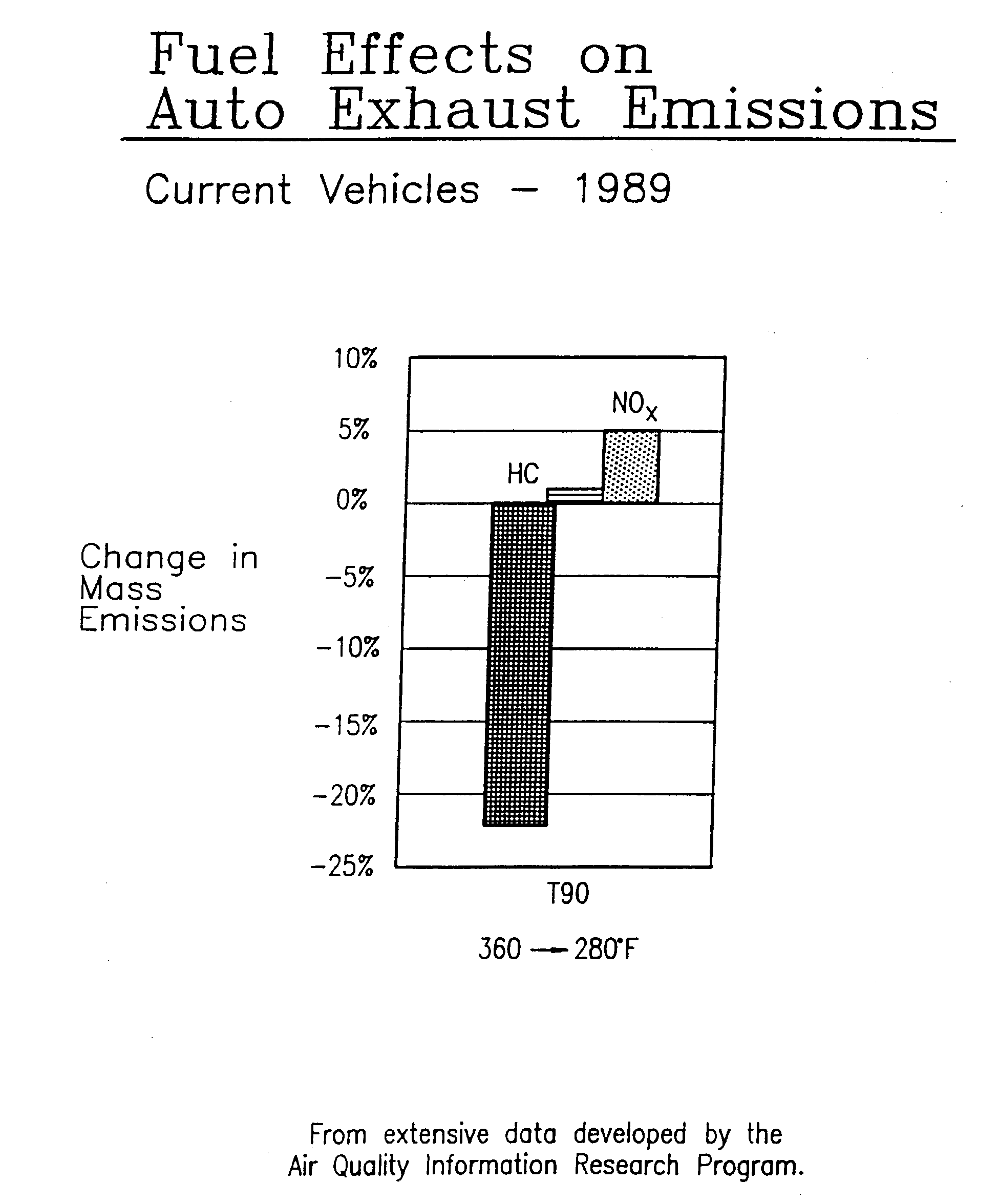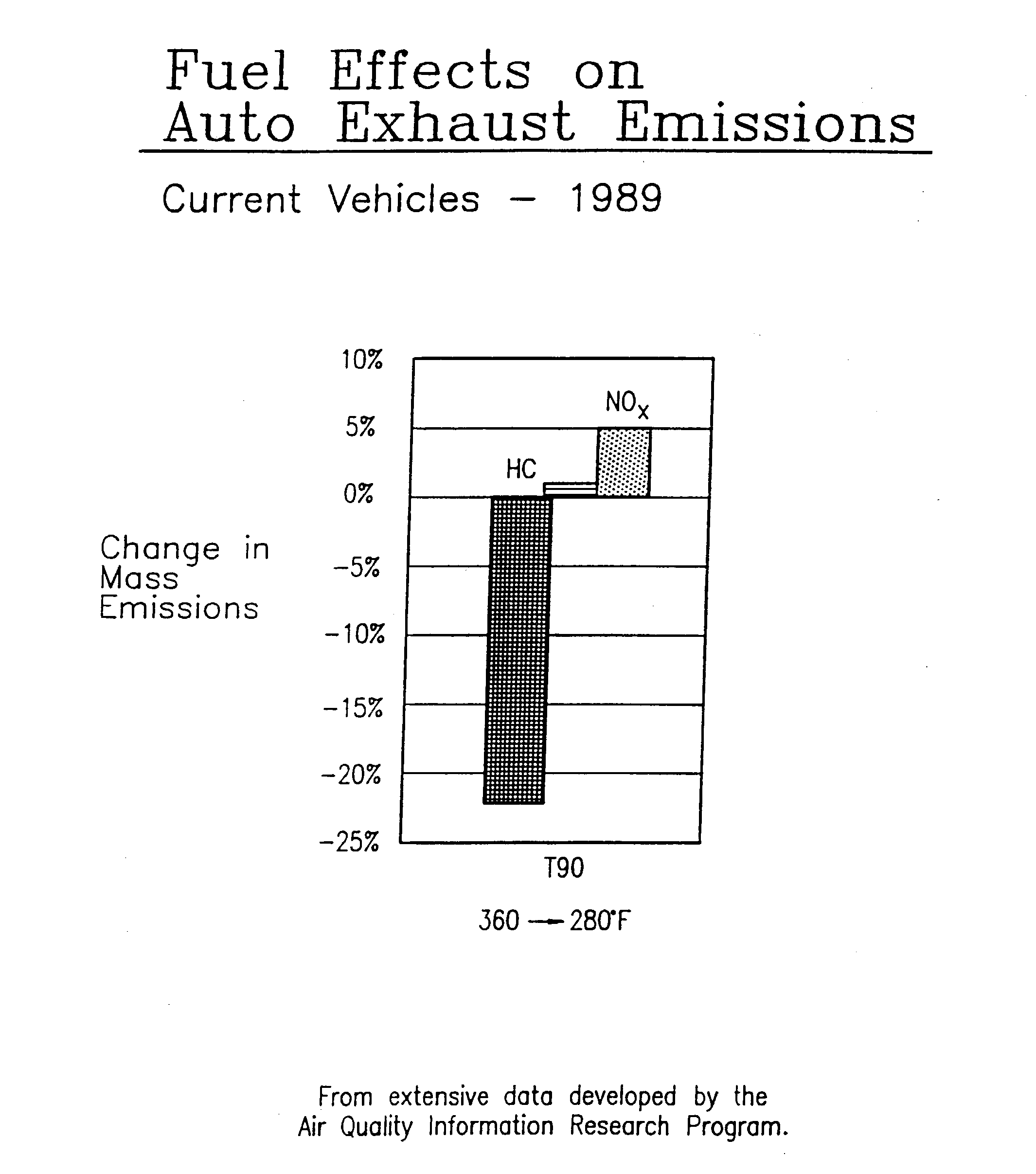Automotive gasoline fuel for internal combustion engine
a technology for internal combustion engines and gasoline fuel, which is applied in the petroleum industry, fuel additives, liquid carbonaceous fuels, etc., can solve the problems of poor efficiency and power output, and achieve the effect of clean burning and low pollution
- Summary
- Abstract
- Description
- Claims
- Application Information
AI Technical Summary
Benefits of technology
Problems solved by technology
Method used
Image
Examples
example 1
[0032] Dynamic testing done at Compliance and Research Services, Inc., Linden, N.J., on an Oldsmobile Cutlass in November, 1989 shows that a fuel designed for improved injector volatilization (i.e., the fuel of this invention having a 90% distillation temp less than 310.degree. F. designated herein as SPECIAL) can perform well without engine knock at low octane. Both HC (hydrocarbon) and CO emissions increase substantially when "knocking" occurs in an engine. In this test the fuel of the invention performed well without elevated emissions of HC and CO, thus establishing that the engine performed well without knocking even though the fuel utilized had an octane rating of only 81.8.
1 GASOLINE* SPECIAL** Emissions HC (avg) - .146 HC (avg) - .136 City CO (avg) - 1.449 CO (avg) -1.431 Emissions HC (avg) - .076 HC (avg) - .070 Highway CO (avg) - .785 CO (avg) - .593 *Octane R + M / 2 = 92.0 **Octane R + M / 2 = 81.8 Emissions data in grams per mile.
example 2
[0033] At Pittsburgh Applied Research Center (PARC) tests were done using a Pontiac 4-cylinder engine (2.5 L) with a Go Power Dynamometer and a TEC Electromotive Control System. The following data were taken from spread sheets operating the engine at about 2,000 rpm with all conditions being about the same except for hydrocarbons. NO.sub.x and fuel used as per the following chart:
2 SPARK ADVANCE DATE HC NO.sub.x (measured in degrees) GASOLINE Jun. 14, 1990 784 1,076 49 Chevron Jun. 14, 1990 788 1,232 49 Chevron Jun. 13, 1990 800 960 49 Special* Jun. 13, 1990 804 968 49 Special* Jun. 13, 1990 752 556 43 Special* Jun. 13, 1990 744 596 44 Special* Jun. 13, 1990 712 368 38 Special* Jun. 13, 1990 712 328 38 Special* *less than 310 degrees F., 90% distillation temperature. Note the change in NO.sub.x with the variation in spark advance.
PUM
| Property | Measurement | Unit |
|---|---|---|
| octane number | aaaaa | aaaaa |
| octane rating | aaaaa | aaaaa |
| temperature | aaaaa | aaaaa |
Abstract
Description
Claims
Application Information
 Login to View More
Login to View More - R&D
- Intellectual Property
- Life Sciences
- Materials
- Tech Scout
- Unparalleled Data Quality
- Higher Quality Content
- 60% Fewer Hallucinations
Browse by: Latest US Patents, China's latest patents, Technical Efficacy Thesaurus, Application Domain, Technology Topic, Popular Technical Reports.
© 2025 PatSnap. All rights reserved.Legal|Privacy policy|Modern Slavery Act Transparency Statement|Sitemap|About US| Contact US: help@patsnap.com


